The Ultimate Guide to Rankin’s Dragon vs. Bearded Dragon: Differences, Care, and More
People often have trouble deciding between Rankin’s Dragons and Bearded Dragons. They are both types of lizards, but they have some key differences. After all, they both come from the lizard family and seem quite similar at first glance. In this article, we will answer some of the most common questions about these two types of dragons, as well as provide tips on how to care for them. So, if you are considering adding one of these animals to your family, read on!
Bearded Dragon vs Rankin’s Dragon: Summary
Bearded Dragon Summary
The Bearded Dragon is a lizard that is found in the wild in Australia. They’re scientifically known as Pogona, and they may reach a size of up to 24 inches. Beardies are popular pets because they are friendly, docile, and easy to care for.
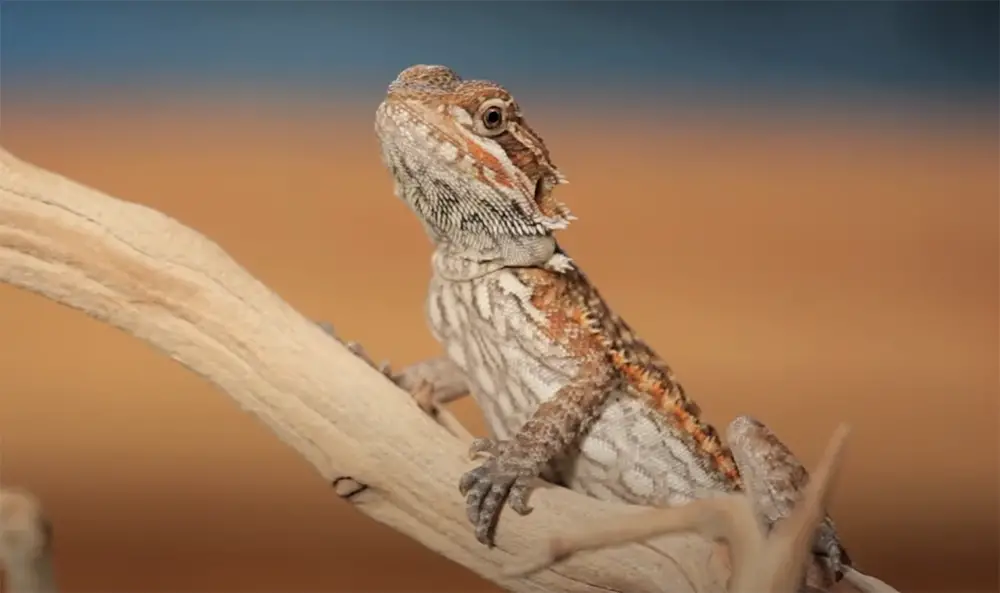
Bearded Dragons are excellent first pets for anyone interested in reptiles. They have personality and character, which makes them interesting to watch and interact with. When it comes to Bearded Dragon care, there are a few things you need to know to keep your pet healthy and happy.
Bearded Dragons are generally hardy animals that are not prone to health problems. However, there are a few things you should watch out for, such as:
- Metabolic Bone Disease
- Inclusion Body Disease
- Impaction
Rankin’s Dragon Summary
The Rankin’s Dragon is a small Australian lizard that is part of the Agamidae family. This reptile is also known as the pygmy Bearded Dragon and mini beardie. As its name suggests, Rankin’s Dragon originates from Australia’s Northern Territory.
Rankin’s Dragons are mostly found in dry open woodlands and savannahs. They bask in the sun during the day to keep their body temperature stable and spend most of their time on tree branches or rocks. These lizards are opportunistic feeders and will eat anything they can catch, including insects, spiders, small mammals, and even other lizards.
They are semi-arboreal, meaning they spend part of their time in trees. In the wild, these lizards can live up to 15 years, but in captivity, they typically only live for about eight years.
The Rankin’s Dragon is a small lizard with an average length of 12 to 20 cm (from nose to tail tip). These reptiles have a flat body with short limbs and a long tail. They are covered in small scales that range in color from light brown to reddish-brown. The belly of Rankin’s Dragon is cream-colored with dark spots. Males and females look similar, but males tend to be slightly larger than females.
Rankin’s lizards are a type of reptile that make excellent pets. They are easy to care for and can be handled frequently. These reptiles do not require a lot of space, so they can be kept in small tanks or vivariums. Rankin’s Dragons are shy lizards that prefer to hide when they feel threatened, so it is important to provide them with plenty of hiding places in their cage. They are not aggressive lizards and will usually get along with other reptiles that are similar in size.
Main Differences Between Rankin’s Dragon vs Bearded Dragon
Lifespan
One of the most essential distinctions between these two lizards is how long they live. Bearded Dragons live an average of 12-15 years, whereas Rankin’s Dragons only survive 6-10 years. This difference in lifespan is likely due to the fact that Rankin’s Dragons are significantly smaller than beardies dragons and have a shorter life expectancy as a result. [1]
Size
One of the most striking distinctions between these dragons is size. Bearded Dragons usually grow to be around 18-24 inches long. Rankin’s Dragons, however, are typically smaller and only grow to be around 12-14 inches long. This size difference is due to the fact that Rankin’s Dragons are a dwarf species of dragon.
Another difference between these two types of lizards is their weight. Bearded Dragons can weigh anywhere from 0.25-0.75 pounds, whereas Rankin’s Dragons only weigh 0.15-0.25 pounds.
Looks
The two species couldn’t look more different if they tried. Rankin’s Dragons are small, with an adult length of only about 20 cm. They’re a uniform dark brown color, with a slightly lighter brown on their bellies. Bearded Dragons, on the other hand, can grow up to 60 cm long. They have a light tan body color, with darker markings on their backs and sides. The most apparent variation is that beardies have a “beard” of spiked scales around their mouths, whereas Rankin’s dragons do not.
Sociability
One of the key differences between Rankin’s Dragons and Bearded Dragons is their sociability. Rankin’s dragons are more social than Bearded Dragons. This means that if you’re looking for a pet dragon that you can interact with on a regular basis, a Rankin’s Dragon is probably a better option. However, if you’re not looking for a pet that requires a lot of interaction, then a Bearded Dragon might be better suited for you.
Enclosure Size Requirements
Bearded Dragons come in two different sizes, standard and pygmy. Standard-sized Bearded Dragons will grow to be about 18 inches long from nose to tail. Pygmy Bearded Dragons are a smaller subspecies and only grow to be about half that size, around eight to ten inches long.
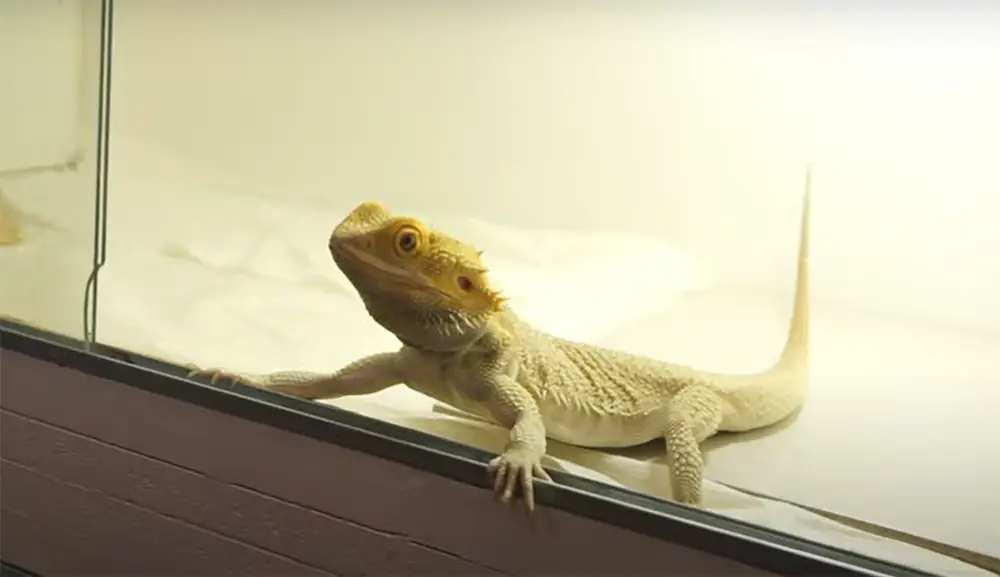
To accommodate for their size difference, the minimum enclosure size requirements for each type of Bearded Dragon also differ. A baby or juvenile standard beardie should have an enclosure that’s at least 24 by 12 inches wide and deep, with adults needing something closer to 36 by 18 inches. meanwhile, pygmy beardies can get by in something much smaller like a ten-gallon aquarium or terrarium that’s 20x12x12 inches.
As your Bearded Dragon matures, it will need more space to roam. It’s generally a good idea to err on the side of caution and get an enclosure that’s too big rather than one that’s too small. That way, you won’t have to upgrade their home as often and they’ll have plenty of room to explore and exercise as they please.
As you might imagine, since Rankin’s Dragons are smaller, they will need a smaller enclosure than a full-grown Bearded Dragon.
Bearded Dragons need a minimum enclosure that is at least 40 gallons, while Rankin’s Dragons only need something around 20 gallons.
Of course, if you have the space, it’s always better to give your reptile more room to move around!
What To Put In Their Enclosure
Both types of dragon will need:
A basking spot with a temperature of 95-110 degrees Fahrenheit for Bearded Dragons and 100-110 degrees Fahrenheit for Rankin’s Dragons.
- UVB lighting
- A cool side with a temperature of 75-85 degrees Fahrenheit
- Hides or caves on both the warm and cool sides of the enclosure
- Live plants
- A water dish
- Cage furniture such as rocks, branches, and hides
Temperature & Lighting
Bearded Dragons come from the desert regions of Australia where temperatures can exceed 100 degrees Fahrenheit. In captivity, they should be provided with a basking spot that allows them to warm up to around 95-105 degrees. At night, the temperature can drop down to 75-80 degrees.
Rankin’s Dragons come from a more temperate climate in the wet tropical rainforests of northeastern Queensland. They should be provided with a basking spot of 100-110 degrees and nighttime temperatures of 80 degrees. [2]
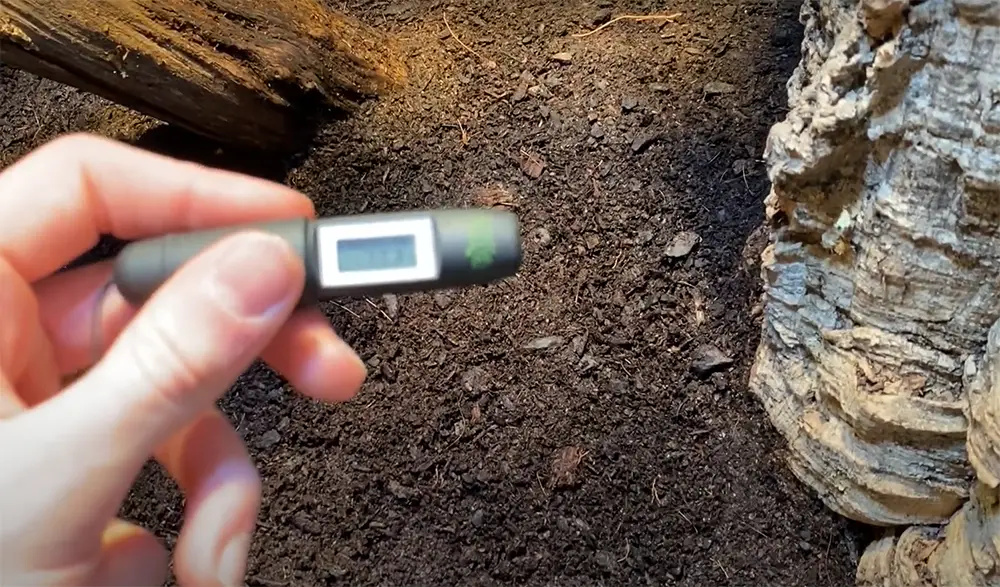
Both Bearded Dragons and Rankin’s Dragons require UVB lighting to prevent metabolic bone disease. Beardies need 12-14 hours of light per day, while Rankin’s Dragons need 14-16 hours.
In the wild, both species will lie in the sun to keep their body temperatures even. If you are keeping your dragon outdoors, make sure they have access to a shady spot to cool down as well as a basking spot.
Indoors, you can use incandescent bulbs, fluorescent bulbs, or mercury vapor bulbs for basking and UVB lighting. Mercury vapor bulbs provide both heat and UVB light, so they are a good option if you don’t want to use multiple types of bulbs. However, they can be expensive and emit a lot of light, so you may want to use them in combination with other types of lighting.
Humidity
To meet the higher humidity requirements of Rankin’s Dragons, you will need to use a humidifier in their enclosure. You will also need to mist their enclosure with water every day. Misting helps to raise the humidity level in the enclosure and also provides your dragon with a source of water to drink.
Bearded Dragons, on the other hand, do not require a humidifier in their enclosure. They can get all the moisture they need from drinking water and eating vegetables. You should still mist their enclosure once or twice a week to help them shed their skin properly.
Water
Bearded Dragons are desert animals and therefore do not require too much water. A bowl of water should be provided for them to soak in and drink as they please, but it is not necessary to mist their enclosure. In the wild, they get the majority of their hydration from the food they eat.
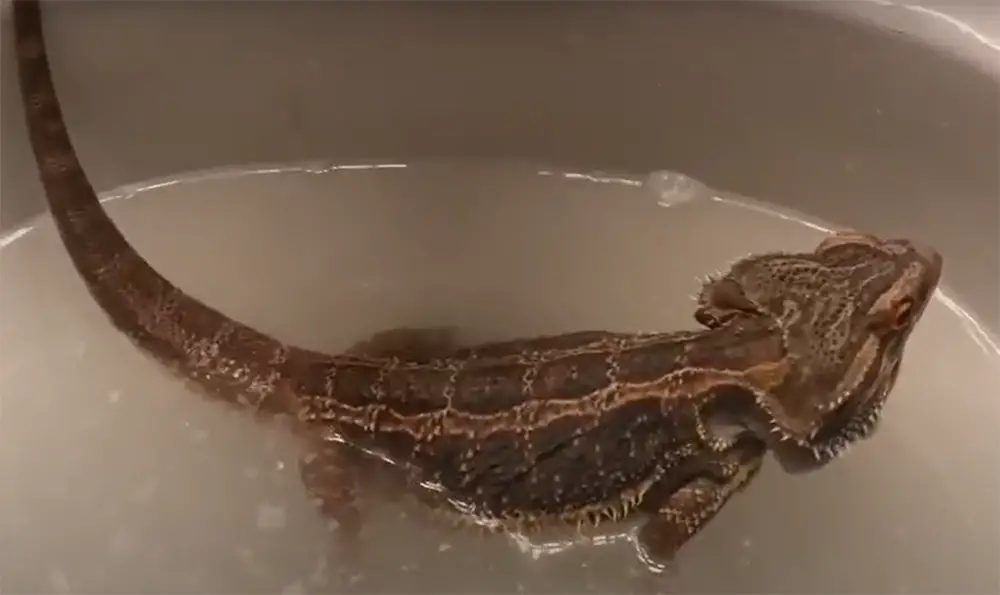
Rankin’s Dragons come from a wetter environment and will need more care when it comes to hydration. They should have a large water dish that they can swim in if they choose too. Their tank should also be misted a few times a week with clean filtered water.
Food & Diet
One of the biggest differences between Rankin’s Dragon and Bearded Dragon is their habitat and diet needs! As we said before, Rankin’s Dragons come from the rainforest while Bearded Dragons are desert-dwellers.
This difference in habitat means that their dietary needs are also very different! For example, Rankin’s Dragons need a lot of leafy greens and fruits in their diet while Bearded Dragons mainly eat insects.
The first thing you’ll notice about Rankin’s Dragons is that they love to eat! They will often beg for food and can become overweight if not properly monitored. Bearded Dragons are much more reserved when it comes to food. They usually only eat when they’re hungry and won’t beg for food like Rankin’s Dragons will.
When it comes to diet, both Rankin’s Dragons and Bearded Dragons are omnivores. This means that they need a diet that consists of both plants and animals. For Rankin’s Dragons, we recommend a diet that consists of 70% vegetables and 30% insects. For Bearded Dragons, we recommend a diet that consists of 50% vegetables and 50% insects.
It’s important to note that both Rankin’s Dragons and Bearded Dragons are susceptible to obesity, so it’s important to monitor their food intake and make sure they are getting enough exercise!
Possible Health Issues
Bearded Dragons are generally healthy, but there are a few health issues that you should be aware of. One potential issue is metabolic bone disease, which can be caused by a lack of calcium in the diet. If your Bearded Dragon does not get enough calcium, it can lead to problems with its bones and joints.
Another potential health issue is impaction. This occurs when your Bearded Dragon eats something that it cannot digest, such as sand or dirt. The object can become lodged in its digestive system and cause blockages. If you think your Bearded Dragon may be impacted, take it to the vet immediately.
The most prevalent health issues seen in Rankin’s dragons are:
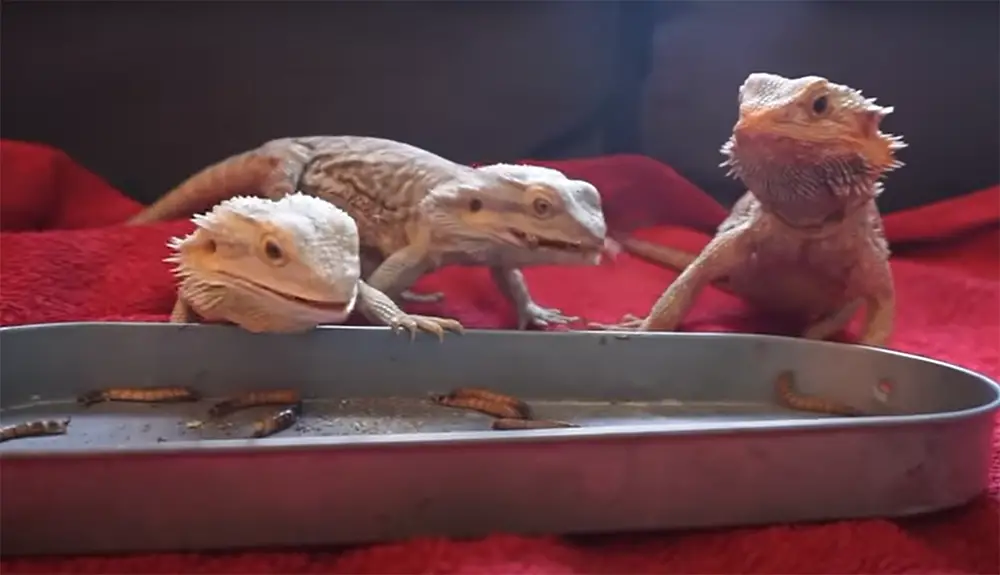
Impaction: This is a common problem for all reptiles, and occurs when the dragon ingests something that it cannot digest properly. Sand and other small particles are the most common culprits, and can cause serious blockages in the digestive tract. Symptoms of impaction include loss of appetite, lethargy, and vomiting.
Respiratory infections: These are also common in reptiles, and are usually caused by a bacteria or virus. Symptoms include wheezing, sneezing, and discharge from the nose or mouth.
Mouth rot: This is an infection of the mouth that can be caused by several different bacteria. Symptoms include ulcers on the tongue or gums, difficulty eating, and drooling. Mouth rot is serious and can be fatal if left untreated, so take your dragon to the vet as soon as you notice any symptoms.
Dehydration: Dragons need to drink water every day, and they can become dehydrated if they don’t have enough. Symptoms of dehydration include sunken eyes, dry skin, and lethargy. If you think your dragon is dehydrated, offer it water and see if it drinks. If it doesn’t, take it to the vet immediately.
Behavior & Temperament
Rankin’s Dragons are shy lizards that like to hide. They are not as tolerant of handling as Bearded Dragons and may bite if they feel threatened. Rankin’s Dragons also require more hiding places in their enclosure than Bearded Dragons. [4]
Bearded Dragons, on the other hand, are friendly lizards that enjoy being handled. They are very curious creatures and will often approach humans when they see them. Bearded Dragons also like to bask in the sun and can be seen basking on rocks or logs in their enclosure.
Can I Keep a Bearded Dragon and a Rankin’s Dragon in the Same Enclosure?
The quick answer is no. Although they are both lizards, and even look quite similar, these two species come from different parts of the world and have very different needs. Rankin’s Dragons come from the tropical rainforests of Queensland, Australia while Bearded Dragons come from the arid, semi-desert regions of central Australia.
This means that Rankin’s Dragons need a warm and humid environment while Bearded Dragons do best in a dryer environment. Putting them both in the same enclosure would be like putting a polar bear and a desert tortoise in the same room – it just wouldn’t work!
FAQ
Are water dragons and Bearded Dragons the same?
No, water dragons and Bearded Dragons are not the same. They are different species of lizards. [5]
Water dragons are part of the genus Physignathus and the family Agamidae, while Bearded Dragons are part of the genus Pogona and the family Agamidae.
The main difference between water dragons and Bearded Dragons is their habitat. Water dragon lizards live near bodies of water, such as rivers, lakes, or swamps. Bearded Dragon lizards live in arid environments, such as deserts or scrubland.
Which Bearded Dragon is best?
For starters, Rankin’s dragons are smaller than beardies. Additionally, Rankin’s dragons have softer skin than beardies. This can make them more prone to injuries if they’re not handled carefully.
So, which type of Bearded Dragon is best for you? It really depends on your individual preferences and lifestyle. If you’re looking for a smaller pet that is easier to care for, then a Rankin’s dragon might be the better option. However, if you don’t mind caring for a larger animal, then a beardie might be the right choice for you.
Can Bearded Dragons eat bananas?
The quick answer is yes, Bearded Dragons can eat bananas! Bananas are a good source of vitamins and minerals, and they can be a tasty treat for your beardie. Just be sure to give them in moderation, as too much sugar can lead to health problems. [6]
It’s also vital to keep in mind that only tiny pieces should be offered when feeding your Bearded Dragon a banana. This is because their digestive system is not able to process large chunks of food very well. If you give them too much at once, it could cause an intestinal blockage, which can be fatal.
It’s also important to remove the banana peel before giving it to your Bearded Dragon. The peel contains substances that can be harmful to their health if ingested.
One thing to keep in mind when feeding your Bearded Dragon banana is that it is a high-sugar fruit. This means that you should only give it to them in moderation, as too much sugar can lead to health problems like obesity and diabetes.
Can Bearded Dragons eat raisins?
Yes, Bearded Dragons can eat raisins! Just make sure to give them in moderation and always supervise your dragon while they are eating.
Raisins are a good source of vitamins and minerals, but they are also high in sugar. So, it’s important to only give your Bearded Dragon a few at a time. You can either offer them as a treat or mix them into their food. [7]
If you do decide to feed your Bearded Dragon raisins, make sure they are fresh and have not been treated with any chemicals or pesticides. You should also wash them thoroughly before giving them to your dragon.
Is a Rankin’s Dragon better than a Bearded Dragon?
The jury is still out on whether one type of dragon is better than the other. It really depends on what you are looking for in a pet. If you want a docile and low-maintenance pet, then a Bearded Dragon might be a better choice. However, if you are looking for an active and playful dragon, then Rankin’s dragon might be a better fit.
Where do Rankin’s Dragons come from?
Rankin’s Dragons are found in the wild in Australia. They get their name from the Rankin River, which is located in Queensland.
How long do Rankin’s Dragons live for?
Rankin’s Dragons can live for around 6 to 10 years.
Can I kiss my Bearded Dragon?
The answer is no. While Bearded Dragons may seem like they would enjoy a good neck scratch or head rub, they do not like to be kissed. In fact, kissing a Bearded Dragon can be dangerous for both you and the reptile. [8]
Here’s why:
- Bearded Dragons have bacteria in their mouths that can cause infections in humans. These bacteria can lead to serious health problems, including respiratory illness and meningitis.
- Kissing a Bearded Dragon can also stress out the reptile. Bearded Dragons are naturally shy creatures, and being kissed by a human can be overwhelming for them.
If you must show your affection for your Bearded Dragon, stick to gentle scratches on the head or neck. Your dragon will appreciate it much more than a kiss!
How much does a Rankin Dragon cost?
The price of a Rankin’s Dragon typically falls between $100 and $400. [9]
You can find them for cheaper, but it is important to remember that you get what you pay for. If you purchase Rankin’s dragon from a pet store, they will likely be wild caught.
Useful Video: Rankin’s Dragons vs Bearded Dragons! — What’s the Difference?
Conclusion
In conclusion, both Rankin’s Dragons and Bearded Dragons make great pets. However, there are some key differences between the two that you should be aware of before making your decision. Rankin’s Dragons are typically smaller and more active, while Bearded Dragons are larger and more docile. Rankin’s Dragons also require more frequent meals and a higher humidity level, while Bearded Dragons can go longer without food and prefer a drier environment. Ultimately, the best pet for you will depend on your personal preferences and lifestyle. Thanks for reading!
References:
- https://reptileslife.com/rankins-dragon-vs-bearded-dragon/
- https://www.reptilecentre.com/info-rankins-dragon-care-sheet
- https://www.reptiles.swelluk.com/help-guides/rankins-dragon-care-guide/
- https://www.reptiledirect.com/
- https://animals.mom.com/water-dragon-vs-bearded-dragon-2717.html
- https://vetexplainspets.com/can-bearded-dragons-eat-bananas/
- https://totalbeardeddragon.com/can-bearded-dragons-eat-raisins/
- https://www.ajc.com/pulse/why-your-pet-bearded-dragon-might-make-you-sick/KZSRAFYYQNHFPD2GG6F5KCU6WY/#:~:text=Play%20safely%3A%20Don’t%20kiss,mouth%20and%20make%20you%20sick
- https://www.restaurantnorman.com/how-much-does-a-rankin-dragon-cost/

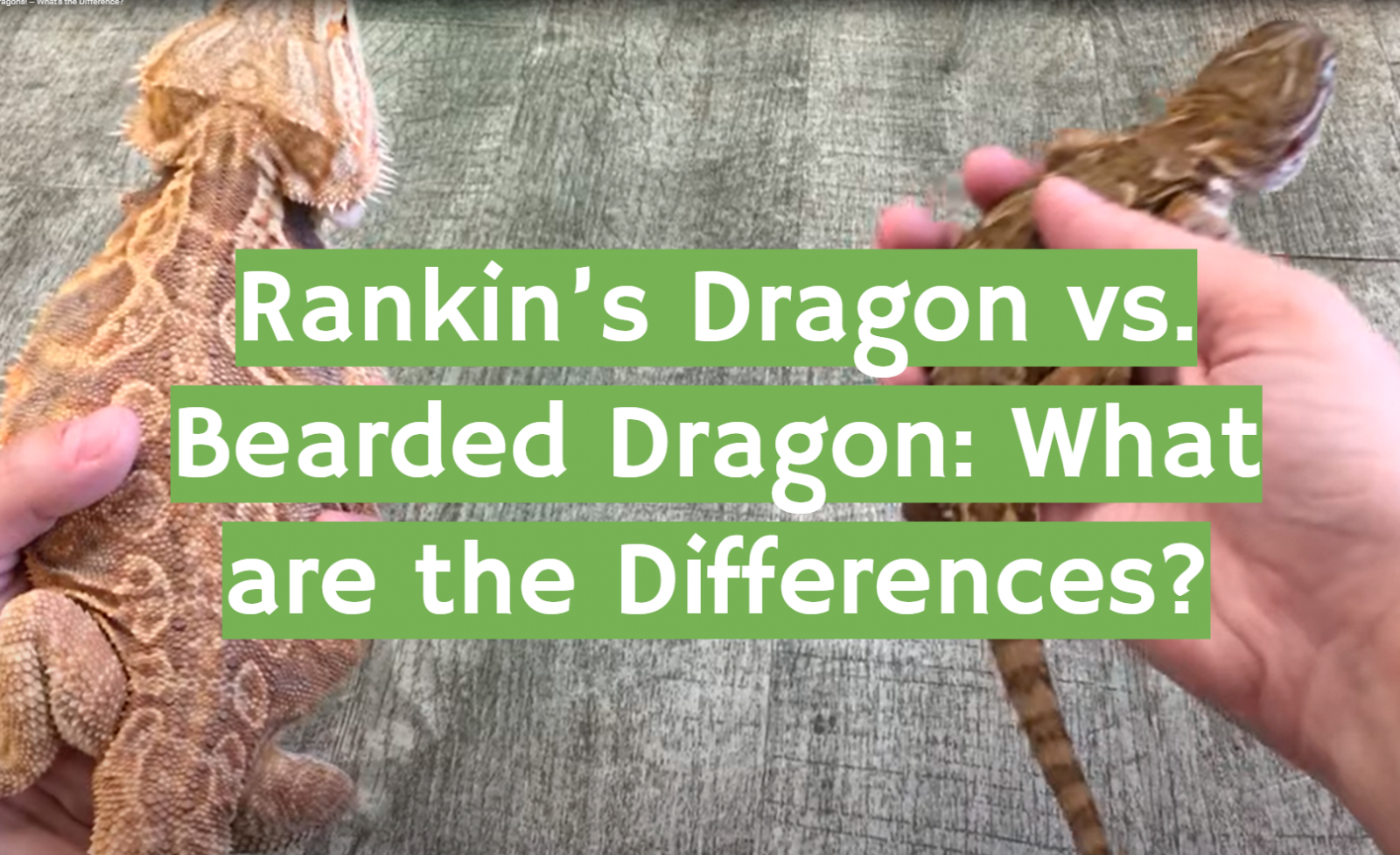
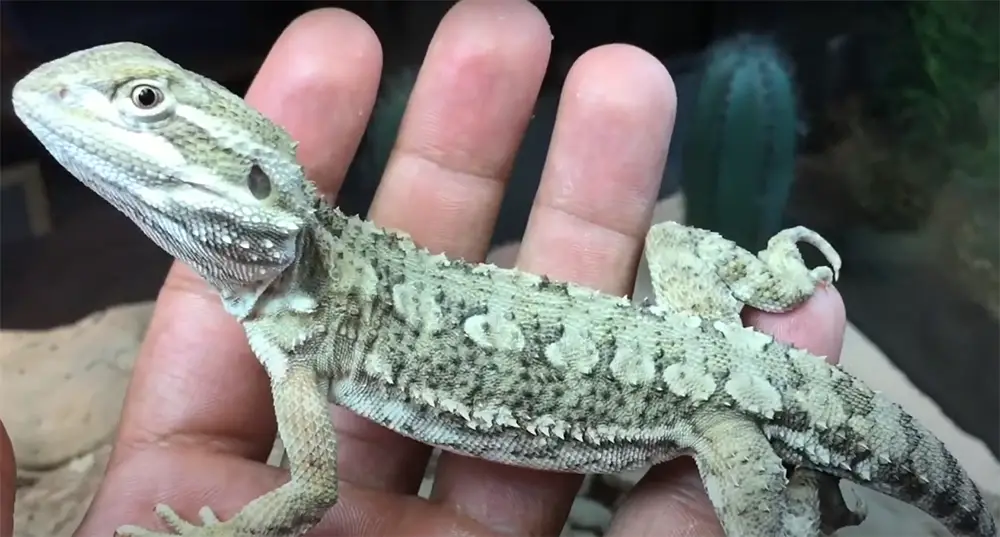
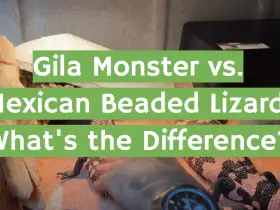
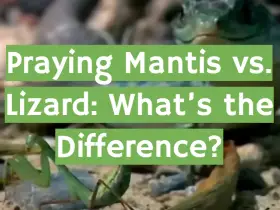
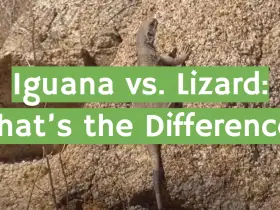
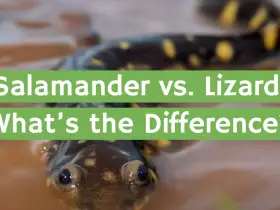
Leave a Review